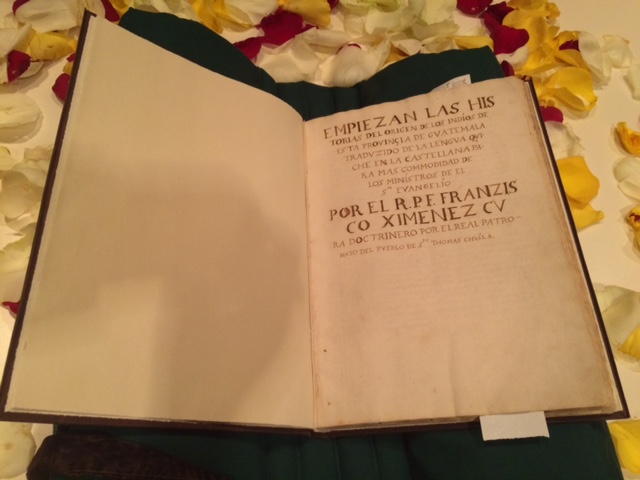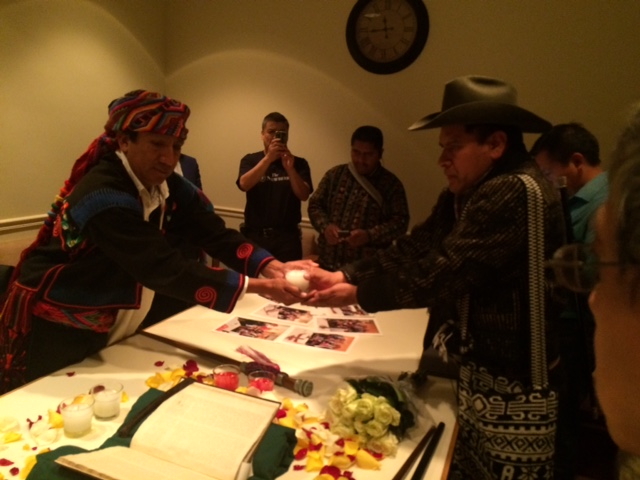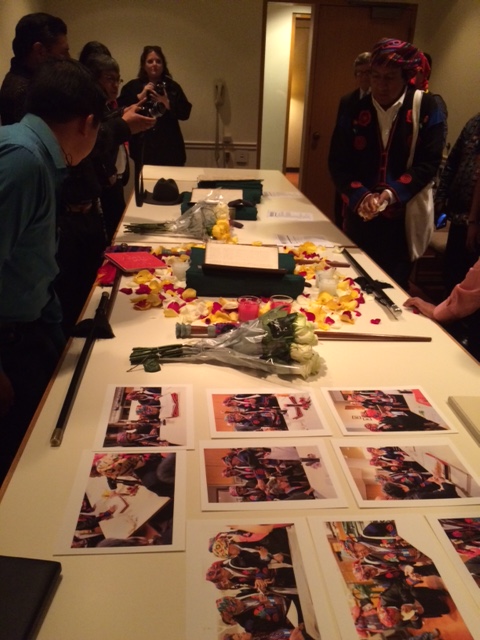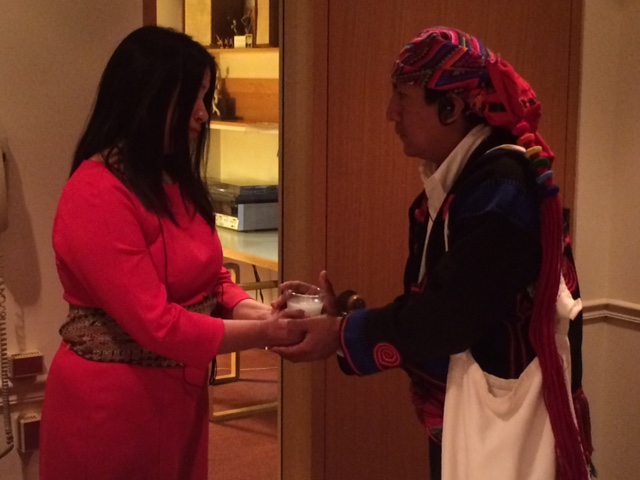The Popol Vuh or “Book of the People” is a collection of mytho-historical narratives originating from the Post Classic K’iche Kingdom of Guatemala. These stories tell the tales of the Hero Twins Hunahpu and Xbalanque, the story of Creation, and other Mayan mythologies.

The most celebrated mythology in the text is the story of the Hero twins Hunahpu and Xbalanque. The Hero Twins’ father was a great ballplayer who was tricked into death by the Lords of Death. When the Lords of Death learned that the Hero Twins were even better at ball than their father, the Lords again tried to trick the twins; however, this time the Hero Twins knew they were being tricked. After successfully maneuvering through difficult obstacles, the Hero Twins were able to trick the Lords of Death into killing themselves instead. The story ends with the Hero Twins ascending into the sky and becoming the Sun and the Moon. The ballgame described in this myth was a significant aspect of the ancient Mayan culture. Every community had multiple courts for recreation, religious rituals, and competitions. When conflicts arose between tribes, they would battle it out on the court instead of the battlefield. Mayan artifacts suggests that the losing team would serve as a human sacrifice, and their decapitated heads would later be used as balls. Many of these aspects of the game are seen throughout the Popol Vuh.

The Popol Vuh came to be in 1701 when Francisco Ximenez visited Santo Tomas Chichicastenango and wrote down the previously spoken stories in parallel K’iche and Spanish columns. After Ximenez’s death, the books were kept in the possession of the Dominican Order. In 1830 the books were taken by General Francisco Morazán and donated to the University of San Carlos. After a French abbot stole the books in 1855 they were sold to various collectors until 1911 when Edward E. Ayer decided to donate the books to Newberry Library in Chicago, Illinois.

During the Guatemala Indigenous Leaders program, sponsored by the U.S. Embassy in Guatemala City through its Bureau of International Narcotics and Law Enforcement Affairs and organized by Meridian International Center, four Guatemalan indigenous leaders and four additional officials of Mayan descent had the opportunity to visit Newberry Library and hold a ceremony for the book. Manuel Xol Tol, Deputy Mayor of Chichicastenango, lead the ceremony as the Popol Vuh originated from his municipality and was written by the forefathers of his community. Much of the ceremony was spoken in K’iche, the Mayan language of Guatemala, as the leaders had the opportunity to touch and read for the very first time the 300 year old book. The Leaders were welcomed to a private viewing room where they blessed group members with candles and flowers. Director of the D’Arcy McNickle Center for American Indian and Indigenous Studies, Dr. Norby explained that the leaders did a protective blessing on the book and of Dr. Norby herself, deeming her the protector of the book.

The Mayan leaders’ greatest wish is for the book to always stay accessible to the younger generations of their culture. The leaders expressed that keeping the Popol Vuh accessible is vital to maintaining Mayan culture and language. Dr. Norby described the event as very emotional due to the deeply personal nature of the ceremony and the text itself. Holding a book that means so much to these men’s history, culture, and identity is a milestone moment in their lives. Dr. Norby has the opportunity to arrange these experiences and witness the various visits from people examining artifacts. She said that experiencing moments with groups like the Indigenous Leaders is more special than assisting a visiting scholar’s research. In the hands of the Indigenous Leaders, the Popol Vuh is not merely an historical artifact, but rather a living piece of their cultural patrimony. From the beginning of the U.S. visit, the Leaders were looking forward to viewing the Popol Vuh, and it is evident that the experience will stay with them forever.
Resources & Further Reading:
http://archaeology.about.com/od/mayaarchaeology/a/Itzamna.htm
















